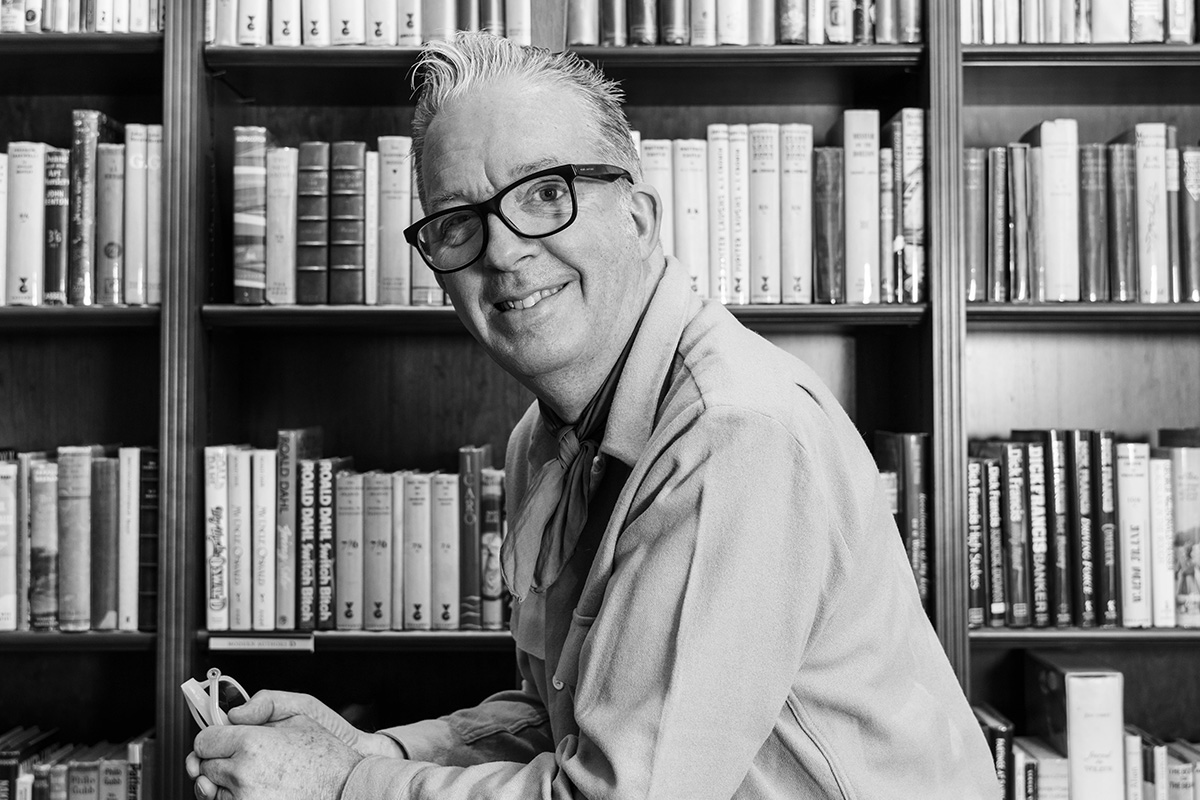From his own design work crafting “epic ephemera” to twenty years’ worth of memories at Peter Harrington, the head of our design team, Nigel Bents, has lots of stories to tell.
Nigel, you are one of the longstanding team members at Peter Harrington; how did you start working here?
I was asked to do a catalogue by Peter Harrington, Pom’s dad, twenty years ago – there were no pictures in it apart from the cover. After its completion, I began working as a freelance designer for the company; and a year later, I’d completed a grand total of five whole catalogues. The work fitted in nicely with my main job of running the first year BA graphics at Chelsea College of Art. Not having to worry about 80-odd students and simply moving type and book pictures around on a page in a quiet carpeted room at 100 Fulham Road became a sort of therapy, much like doing a sudoku. Through all this time, despite teaching term-time 4 days per week, senior specialist Adam Douglas has always maintained that teaching was simply my ‘hobby’ and that Peter Harrington catalogues were the real job.
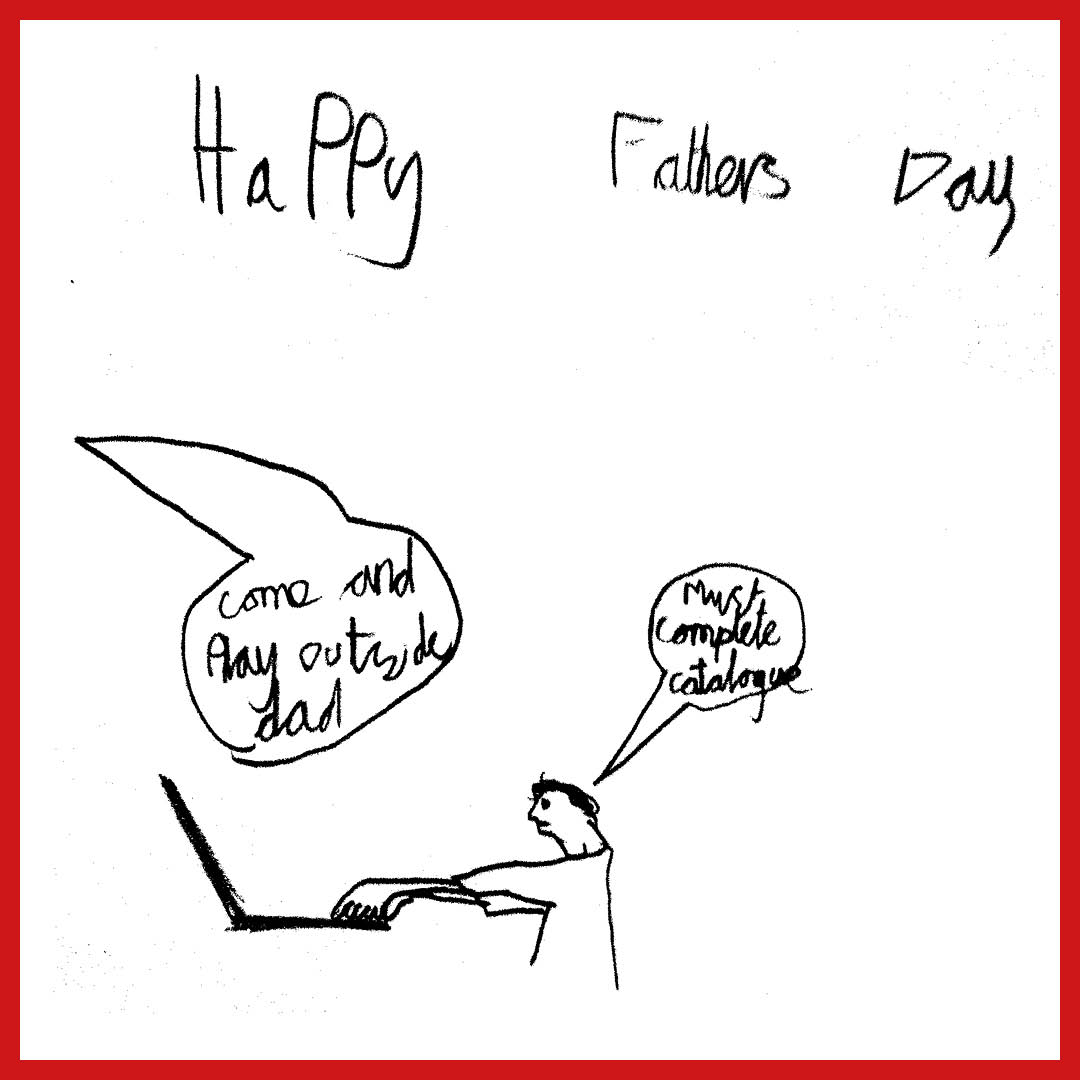
How do you feel looking back at your earliest memories here?
This is probably answered best by my son George’s Father’s Day Card from long ago!! The catalogues took a long time to do in those far-off days; I thought they looked great at the time but now I can see clearly that they look utterly hideous. Like when that cool photo of you as a 17 year-old doesn’t look so cool a few years later.



How do you feel looking back at your earliest memories here?
This is probably answered best by my son George’s Father’s Day Card from long ago!! The catalogues took a long time to do in those far-off days; I thought they looked great at the time but now I can see clearly that they look utterly hideous. Like when that cool photo of you as a 17 year-old doesn’t look so cool a few years later.
How have things changed since you started working?
In those early days I would often spend all night formatting text, working 24-hour shifts. Pablo would get on his moped at Fulham Road and drop off a floppy disk/CD/Hard Drive down the road at college that Ruth, our photographer, had produced, so that I could get on with it after my teaching day was done. Those days and nights were long and hard. Nowadays, or course, it’s better. The software does so much more, and the cataloging team are each allocated specific aspects of preparation so that it runs pretty smoothly. We have an IT department too. In those far off days I would get Chelsea College’s IT department to fix problems!
How have things changed since you started working?
In those early days I would often spend all night formatting text, working 24-hour shifts. Pablo would get on his moped at Fulham Road and drop off a floppy disk/CD/Hard Drive down the road at college that Ruth, our photographer, had produced, so that I could get on with it after my teaching day was done. Those days and nights were long and hard. Nowadays, or course, it’s better. The software does so much more, and the cataloging team are each allocated specific aspects of preparation so that it runs pretty smoothly. We have an IT department too. In those far off days I would get Chelsea College’s IT department to fix problems!
Your funniest memory at Peter Harrington (if you can narrow it down to one!)?
I was working, at home, one night, finishing the Christmas catalogue – it’s the one catalogue that you can’t move the print deadline on. I was so tired that I left the laptop on the sofa, next to the dog, as I went up to bed at about 4:00 am. I came down a few hours later, all ready for the final push to discover that we’d been burgled – and they’d taken my laptop! I have no idea how we did send it to print, but the dog got a very hard time at her annual performance review. These days I’m re-assured by shop manager Joe Jameson’s adage that ‘there is no such thing as a rare book emergency’.
Your funniest memory at Peter Harrington (if you can narrow it down to one!)?
I was working, at home, one night, finishing the Christmas catalogue – it’s the one catalogue that you can’t move the print deadline on. I was so tired that I left the laptop on the sofa, next to the dog, as I went up to bed at about 4:00 am. I came down a few hours later, all ready for the final push to discover that we’d been burgled – and they’d taken my laptop! I have no idea how we did send it to print, but the dog got a very hard time at her annual performance review. These days I’m re-assured by shop manager Joe Jameson’s adage that ‘there is no such thing as a rare book emergency’.
Who do you work with and how does the team work now?
It’s quite amazing that there are three of us designing now, and we’ve all been to Chelsea College! I share the print design workload with Abbie, who was a student of mine, and Sophie too, who works at Dover Street doing mostly on-line design with the marketing team. We all have different tastes so it’s great to see that reflected in design selections as we constantly try to refresh and broaden how we show our mostly antique imagery. Nowadays we have a wide range of specialists who each have their own take on how they’d like their collated material to appear. Working on these diverse collections – whether Poetry, Climate Change, Jazz, Occult – gives us a constantly varied range of visual matter and the opportunity to share their worlds and passions! Theodora flawlessly supervises our catalogue production – which has risen to a startling 18 scheduled this year in some form or other. It’s a pleasant experience in our small attic room at Fulham Road, and with many staff that have been here as long as I have, there are far less sleepless nights these days.
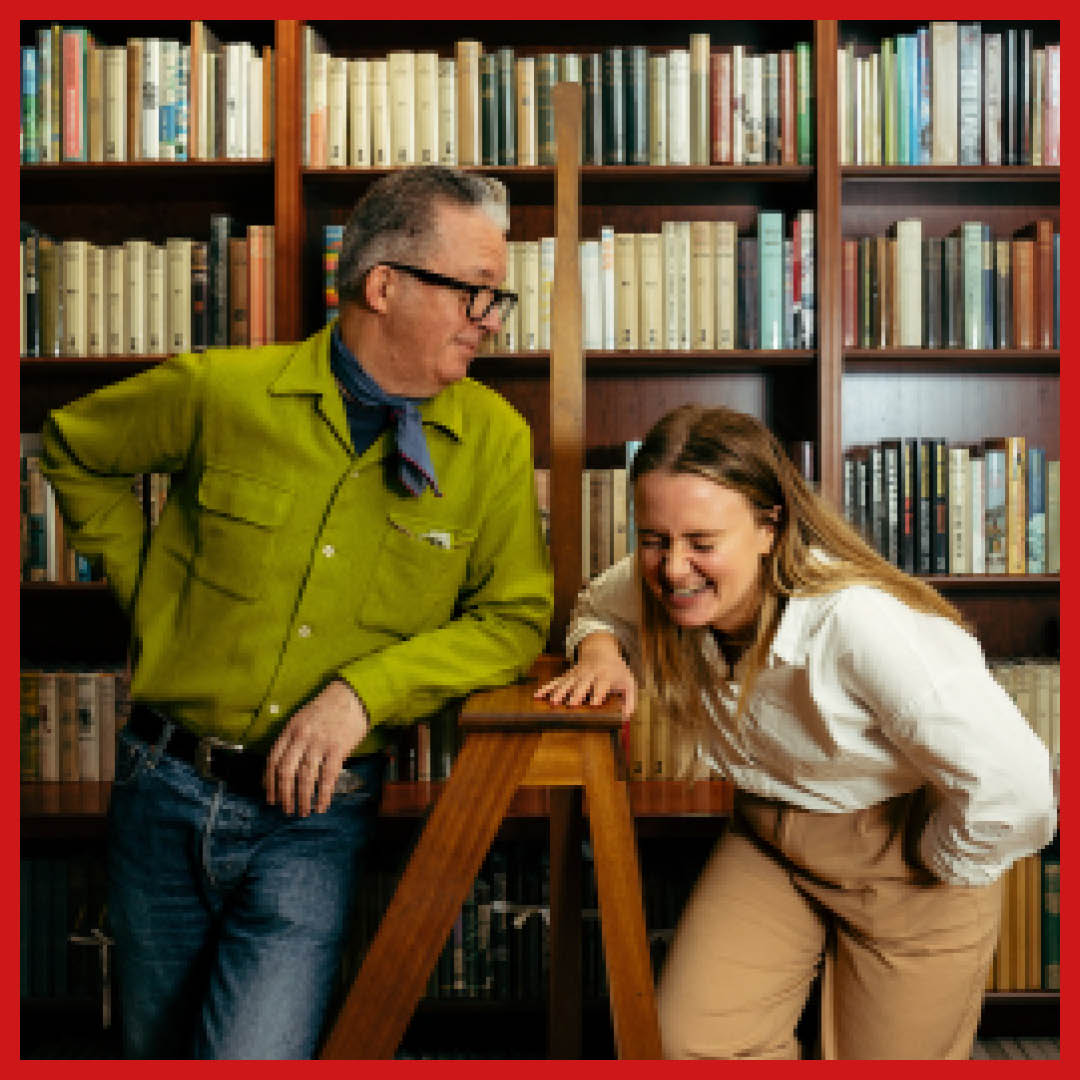


Who do you work with and how does the team work now?
It’s quite amazing that there are three of us designing now, and we’ve all been to Chelsea College! I share the print design workload with Abbie, who was a student of mine, and Sophie too, who works at Dover Street doing mostly on-line design with the marketing team. We all have different tastes so it’s great to see that reflected in design selections as we constantly try to refresh and broaden how we show our mostly antique imagery. Nowadays we have a wide range of specialists who each have their own take on how they’d like their collated material to appear. Working on these diverse collections – whether Poetry, Climate Change, Jazz, Occult – gives us a constantly varied range of visual matter and the opportunity to share their worlds and passions! Theodora flawlessly supervises our catalogue production – which has risen to a startling 18 scheduled this year in some form or other. It’s a pleasant experience in our small attic room at Fulham Road, and with many staff that have been here as long as I have, there are far less sleepless nights these days.



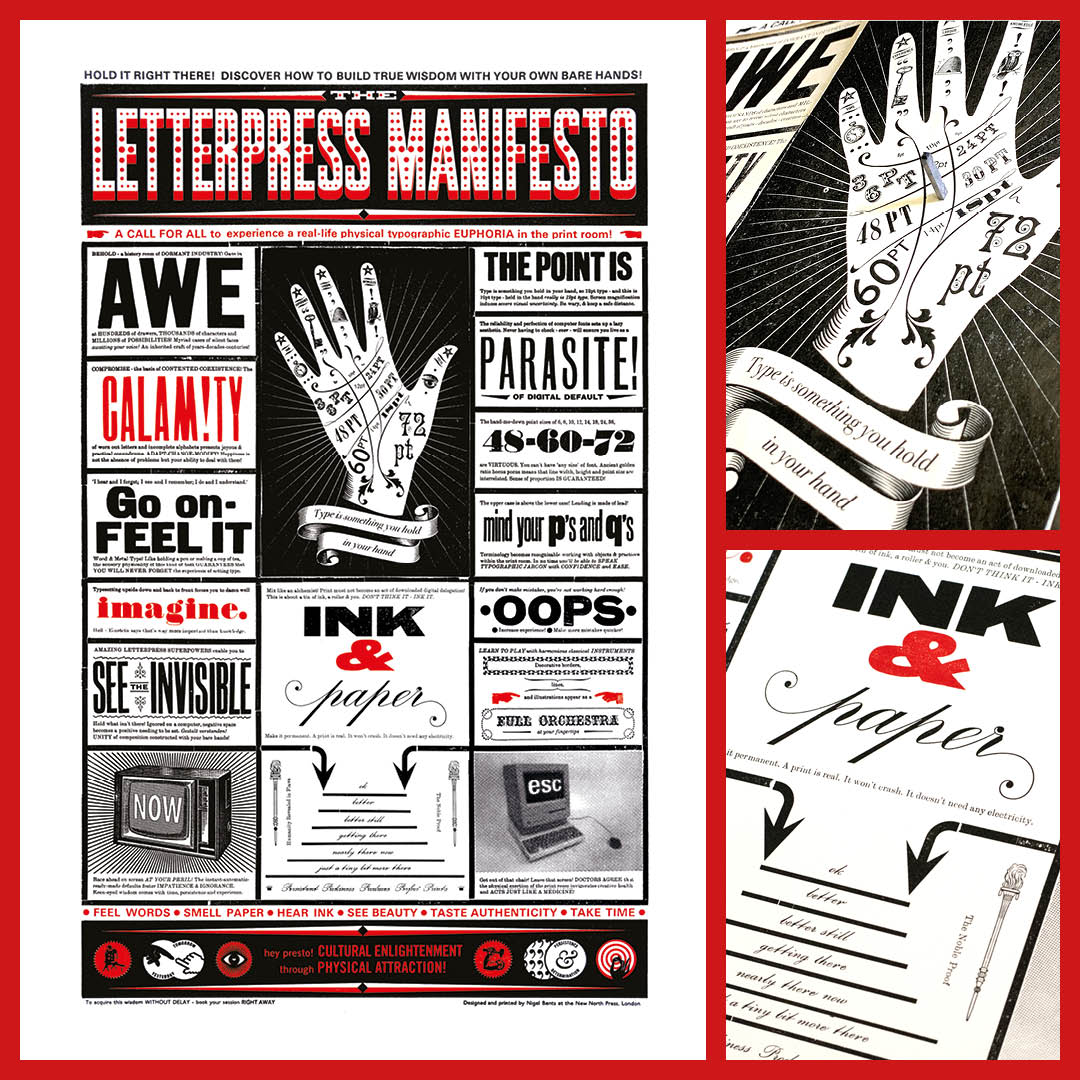


What are you passionate about?
I love letterpress and print, and recently completed ‘the Letterpress Manifesto’ – my love letter to print. And now that I have finished teaching, I’ve been delighted to continue to run some letterpress classes, taking Peter Harrington bookshop staff to the New North Press in Hoxton, where I formally took my students. After all, seeing as that’s how most of the books on our shelves were printed, everyone needs to know how it feels to hold type in their hands!
What are you passionate about?
I love letterpress and print, and recently completed ‘the Letterpress Manifesto’ – my love letter to print. And now that I have finished teaching, I’ve been delighted to continue to run some letterpress classes, taking Peter Harrington bookshop staff to the New North Press in Hoxton, where I formally took my students. After all, seeing as that’s how most of the books on our shelves were printed, everyone needs to know how it feels to hold type in their hands!



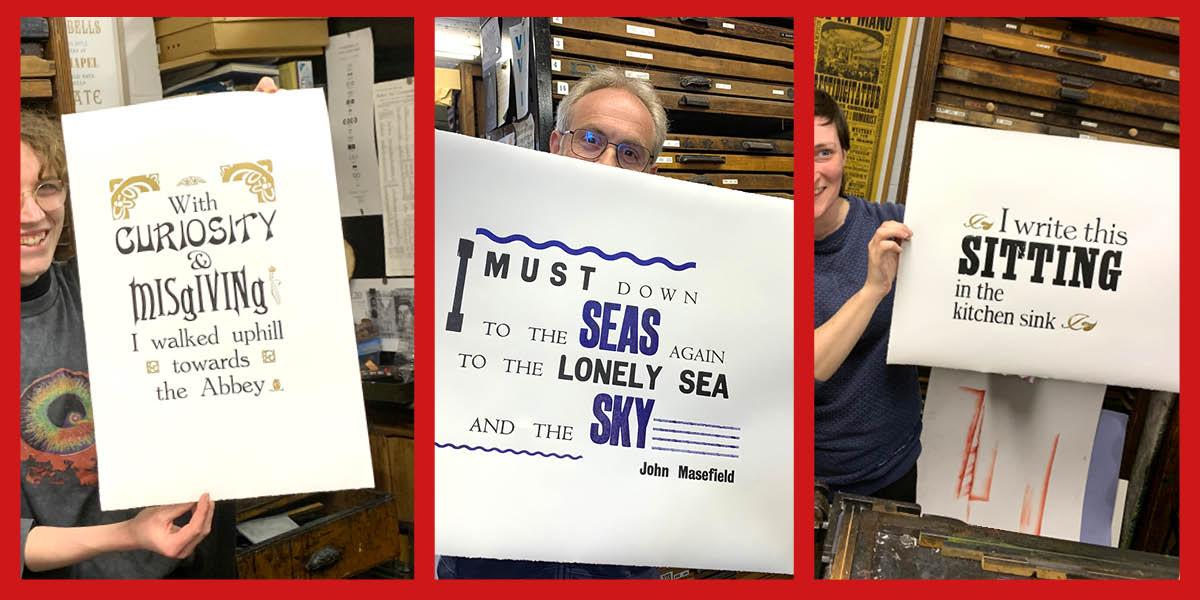

What design work do you do outside Peter Harrington?
I like to produce epic ephemera; meaningless flotsam and jetsam that I post to people. The American artist Ray Johnson with his ‘New York School of Correspondence’ started off what would later become known as mail art, which is how I can happily while away the hours if I’m not at the letterpress. Who needs to write a book when you can send a decent postcard?
What design work do you do outside Peter Harrington?
I like to produce epic ephemera; meaningless flotsam and jetsam that I post to people. The American artist Ray Johnson with his ‘New York School of Correspondence’ started off what would later become known as mail art, which is how I can happily while away the hours if I’m not at the letterpress. Who needs to write a book when you can send a decent postcard?



You must come across so many items that catch your eye, are there any you would have liked to keep for yourself?
I used to collect stuff – postcards… trashy paperbacks… midcentury ceramics; but nowadays I’m more inclined to pass things on. It’s a worrying balance between being a collector and a hoarder; between being an obsessive and a health hazard.
You must come across so many items that catch your eye, are there any you would have liked to keep for yourself?
I used to collect stuff – postcards… trashy paperbacks… midcentury ceramics; but nowadays I’m more inclined to pass things on. It’s a worrying balance between being a collector and a hoarder; between being an obsessive and a health hazard.



How do you find inspiration?
Wandering around museums and galleries is always useful – I rather like PD James’s assertion that all you need for inspiration is time and a pile of junk.
How do you find inspiration?
Wandering around museums and galleries is always useful – I rather like PD James’s assertion that all you need for inspiration is time and a pile of junk.
Which designers do you admire?
I am a disciple of Abram Games with his ethos of ‘Maximum Meaning, Minimum Means’ – he was primarily a poster artist though; I’m not sure he did many book covers. That 1950s postwar period is a diverse mix of austerity and binge, of black & white and colour, of tradition and rock’n’roll. I often seek enlightenment from the creativity of that era. Ley Kenyon who illustrated the cover of People of the City, had forged documents as a captured airman in Stalag Luft III prison camp for the real ‘Great Escape.’ He subsequently taught the Duke of Edinburgh how to scuba dive in the pool at Buckingham Palace. And then taught at Chelsea Art School! Now there’s a CV to aspire to! Victor Reinganum’s cover image for the Prime of Miss Jean Brodie which we used on a Spring catalogue one year is a real joy too. Yep those Illustrated book covers from the 1930s-1960s are a glorious mix of lettering and image; I’ve included quite a few in my selection which is essentially a cross-section of what happens in my brain at any given moment.
Which designers do you admire?
I am a disciple of Abram Games with his ethos of ‘Maximum Meaning, Minimum Means’ – he was primarily a poster artist though; I’m not sure he did many book covers. That 1950s postwar period is a diverse mix of austerity and binge, of black & white and colour, of tradition and rock’n’roll. I often seek enlightenment from the creativity of that era. Ley Kenyon who illustrated the cover of People of the City, had forged documents as a captured airman in Stalag Luft III prison camp for the real ‘Great Escape.’ He subsequently taught the Duke of Edinburgh how to scuba dive in the pool at Buckingham Palace. And then taught at Chelsea Art School! Now there’s a CV to aspire to! Victor Reinganum’s cover image for the Prime of Miss Jean Brodie which we used on a Spring catalogue one year is a real joy too. Yep those Illustrated book covers from the 1930s-1960s are a glorious mix of lettering and image; I’ve included quite a few in my selection which is essentially a cross-section of what happens in my brain at any given moment.
Interview by Winifred Hewitt-Wright

